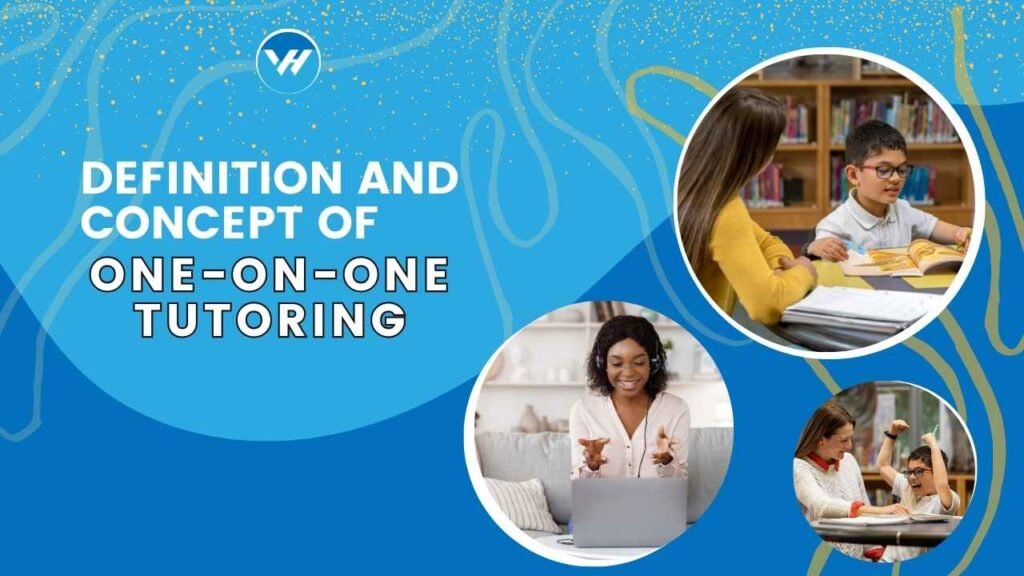One-on-one tutoring is a personalized educational approach where a student receives undivided attention from a tutor. Unlike traditional classroom settings, where one teacher addresses many students, one-on-one tutoring allows for a tailored learning experience. The tutor and student work closely together to address specific academic needs, clarify doubts, and achieve set learning goals. This method is highly adaptable, catering to the unique learning pace and style of each student.

Table of Contents
ToggleImportance of Personalized Education
In an era where educational standards are constantly evolving, personalized learning has gained prominence. One-on-one tutoring embodies this concept by focusing solely on the student’s individual requirements. It provides a platform for students to learn at their own pace, ensuring they grasp fundamental concepts thoroughly before moving on. This tailored approach not only enhances comprehension but also boosts confidence, making learning a more engaging and effective process.
The Evolution of Tutoring
Historical Background
Tutoring has been around for centuries, dating back to ancient civilizations where scholars would teach students individually or in small groups. Historically, tutoring was a privilege of the elite, offering personalized instruction to a select few. Over time, as education became more widespread, tutoring evolved to include various formats, but the core principle remained the same: individualized instruction.
Modern Trends in Tutoring
Today, tutoring has transformed significantly with advancements in technology and educational research. Modern tutoring encompasses both in-person and online formats, offering greater flexibility and accessibility. The rise of digital platforms has introduced new ways of delivering personalized education, making it easier for students to connect with tutors regardless of their location. This evolution reflects a growing emphasis on adapting education to fit the needs of each student, rather than a one-size-fits-all approach.
Key Benefits of One-on-One Tutoring
Customized Learning Experience
One of the most significant advantages of one-on-one tutoring is the customization it offers. Unlike group sessions, where the pace is set by the collective needs of the group, one-on-one tutoring allows the tutor to adjust the pace and style of teaching based on the student’s individual learning preferences. This personalized approach ensures that the student receives instruction that is directly relevant to their needs, enhancing their understanding and retention of the material.
Improved Academic Performance
Studies have shown that students who engage in one-on-one tutoring often see significant improvements in their academic performance. The focused attention from a tutor helps address specific areas of difficulty, leading to better comprehension and mastery of the subject matter. Additionally, the regular feedback and encouragement from the tutor can motivate students to put in more effort, contributing to improved grades and academic success.
Enhanced Student Engagement
One-on-one tutoring creates a supportive learning environment where students feel more comfortable asking questions and expressing their concerns. This increased engagement can lead to a deeper understanding of the material and a more positive attitude towards learning. The personalized interaction fosters a sense of accountability and encourages students to take an active role in their education.
Flexibility and Convenience
With one-on-one tutoring, students and parents have greater control over scheduling. This flexibility allows for sessions to be arranged at times that are convenient for both parties, making it easier to fit tutoring into busy schedules. Whether the tutoring takes place in person or online, the adaptability of one-on-one sessions ensures that students can receive support when they need it most.
How One-on-One Tutoring Works
The Initial Assessment
The first step in one-on-one tutoring is the initial assessment. This involves evaluating the student’s current knowledge, strengths, and areas for improvement. The tutor may use diagnostic tests, review past performance, or have a discussion with the student and parents to gain insights into the student’s academic needs. This assessment helps in creating a tailored tutoring plan that addresses the student’s specific goals.
Setting Learning Goals
Once the assessment is complete, the next step is to set clear learning goals. These goals provide direction for the tutoring sessions and help in measuring progress. Goals can range from improving grades in a particular subject to mastering specific skills or concepts. Setting achievable goals ensures that both the student and tutor have a clear understanding of what needs to be accomplished.
Designing a Tailored Curriculum
Based on the assessment and goals, the tutor designs a customized curriculum. This curriculum is crafted to address the student’s unique learning needs and preferences. It includes specific topics, materials, and activities that are relevant to the student’s objectives. A well-designed curriculum ensures that tutoring sessions are focused and productive, leading to more effective learning outcomes.
Regular Progress Reviews
Regular progress reviews are an essential component of one-on-one tutoring. These reviews involve evaluating the student’s progress towards the set goals, identifying any new areas of difficulty, and adjusting the tutoring plan as needed. Continuous feedback helps in maintaining momentum and making necessary adjustments to the teaching approach, ensuring that the student remains on track to achieve their academic objectives.
Different Formats of One-on-One Tutoring
In-Person Tutoring
In-person tutoring involves face-to-face sessions where the tutor and student meet at a physical location, such as a home or a tutoring center. This traditional format allows for direct interaction and immediate feedback. In-person tutoring is often preferred for subjects that require hands-on practice or for students who benefit from a more personal connection with their tutor.
Online Tutoring
Online tutoring has become increasingly popular, especially with the advancement of digital technology. This format involves virtual sessions conducted through video conferencing platforms. Online tutoring offers convenience and flexibility, as students and tutors can connect from different locations. It also provides access to a broader range of tutors and resources, making it easier to find the right match for the student’s needs.
Hybrid Tutoring Models
Hybrid tutoring combines elements of both in-person and online tutoring. This model allows for a mix of face-to-face and virtual sessions, offering flexibility and the benefits of both formats. For example, a student might have in-person sessions for hands-on subjects and online sessions for theoretical lessons. Hybrid models can be customized to fit the student’s learning preferences and logistical needs.
The Role of the Tutor
Qualities of an Effective Tutor
An effective tutor possesses several key qualities, including patience, communication skills, and expertise in the subject matter. Patience is essential for addressing the student’s questions and providing clear explanations. Strong communication skills help in explaining complex concepts in an understandable manner. Additionally, a deep understanding of the subject allows the tutor to provide accurate and insightful guidance.
Building a Positive Learning Relationship
Building a positive learning relationship is crucial for successful one-on-one tutoring. Tutors should create a supportive and encouraging environment where students feel comfortable and motivated to learn. Establishing trust and rapport helps in fostering a productive learning atmosphere, where students are more likely to engage and participate actively in the tutoring sessions.
Utilizing Effective Teaching Strategies
Effective tutors employ various teaching strategies to enhance learning. These strategies may include using visual aids, incorporating interactive activities, and providing real-world examples. By adapting their teaching methods to the student’s learning style, tutors can make the material more accessible and engaging. Additionally, incorporating regular assessments and feedback helps in identifying areas for improvement and adjusting the teaching approach accordingly.
Choosing the Right One-on-One Tutor
Identifying Your Needs
Before selecting a tutor, it is important to identify the specific needs and goals of the student. Consider factors such as the subject area, level of difficulty, and any particular challenges the student may be facing. Understanding these needs will help in finding a tutor who is well-suited to address the student’s requirements and provide the necessary support.
Researching and Selecting a Tutor
When searching for a one-on-one tutor, it is important to research potential candidates thoroughly. Look for tutors with relevant qualifications, experience, and positive reviews from previous students. Consider scheduling a trial session to assess the tutor’s teaching style and compatibility with the student. Selecting the right tutor involves finding someone who can effectively meet the student’s needs and build a positive working relationship.
Evaluating Tutor Effectiveness
Once a tutor has been selected, it is important to regularly evaluate their effectiveness. This involves monitoring the student’s progress, gathering feedback from the student and parents, and assessing the tutor’s ability to address the student’s needs. Regular evaluations help in ensuring that the tutoring sessions are achieving the desired outcomes and provide an opportunity to make any necessary adjustments.
Challenges and Solutions
Common Challenges in One-on-One Tutoring
While one-on-one tutoring offers many benefits, it also presents certain challenges. Some common challenges include finding the right tutor, managing scheduling conflicts, and addressing varying learning styles. Additionally, students may sometimes struggle with motivation or engagement, impacting the effectiveness of the tutoring sessions.
Strategies to Overcome These Challenges
To overcome these challenges, it is important to maintain open communication with the tutor and address any issues promptly. Establishing clear expectations and goals can help in managing scheduling conflicts and ensuring that both the student and tutor are on the same page. Additionally, incorporating engaging and interactive activities into the tutoring sessions can help in maintaining student motivation and interest.
The Future of One-on-One Tutoring
Innovations in Tutoring Technology
The future of one-on-one tutoring is likely to be shaped by ongoing innovations in technology. Advancements such as artificial intelligence, adaptive learning platforms, and virtual reality are expected to enhance the tutoring experience. These technologies can provide more personalized and interactive learning experiences, further improving the effectiveness of one-on-one tutoring.
The Growing Importance of Personalized Education
As education continues to evolve, the importance of personalized learning is expected to grow. One-on-one tutoring aligns with this trend by offering customized instruction that meets the unique needs of each student. The focus on personalized education ensures that students receive the support they need to succeed academically and reach their full potential.
Conclusion
One-on-one tutoring represents a powerful and effective approach to personalized education. By providing individualized attention and tailoring instruction to the student’s specific needs, one-on-one tutoring offers numerous benefits, including improved academic performance, enhanced engagement, and greater flexibility. As educational trends continue to evolve, the importance of personalized learning and the role of one-on-one tutoring are likely to become even more significant. Whether through in-person, online, or hybrid models, one-on-one tutoring remains a valuable resource for students seeking to achieve their academic goals.
FAQs
What makes one-on-one tutoring different from group tutoring?
One-on-one tutoring differs from group tutoring in that it provides personalized, individualized instruction. Unlike group sessions, where the tutor must address the needs of multiple students, one-on-one tutoring focuses solely on the individual, allowing for tailored lessons and immediate feedback.
How can one-on-one tutoring help with specific learning disabilities?
One-on-one tutoring can be particularly beneficial for students with learning disabilities as it allows for customized strategies and support tailored to their unique needs. Tutors can adapt their teaching methods to accommodate the student’s learning style and provide specialized resources to address specific challenges.
Are online one-on-one tutoring sessions as effective as in-person sessions?
Online one-on-one tutoring can be as effective as in-person sessions, depending on the student’s needs and preferences. Online tutoring offers flexibility and convenience, and advances in technology have improved the quality of virtual learning experiences. However, some students may prefer in-person interactions for certain subjects or activities.
How do I find a qualified one-on-one tutor?
To find a qualified one-on-one tutor, research potential candidates by reviewing their qualifications, experience, and feedback from previous students. Consider using online platforms, such as Virtual Help, which connects students with experienced tutors. Scheduling a trial session can also help in assessing the tutor’s compatibility with the student.
What are the costs associated with one-on-one tutoring?
The costs of one-on-one tutoring can vary depending on factors such as the tutor’s qualifications, experience, and location. Online tutoring platforms may offer different pricing options, including hourly rates or package deals. It is important to discuss pricing and payment options with the tutor or tutoring service before starting sessions.





